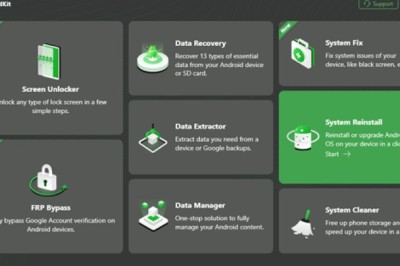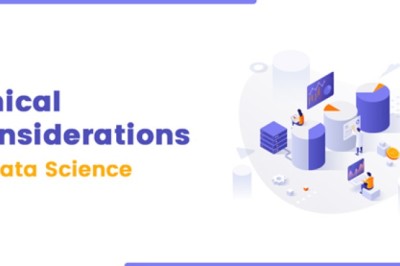views

Introduction
Onboarding new hires in the tech industry is a critical process that sets the stage for their success within an organization. A well-planned onboarding program not only helps new employees acclimate to their roles and responsibilities but also fosters a sense of belonging and engagement within the company.
In this article, we will explore best practices for onboarding new hires in the tech sector, ensuring that they are equipped with the tools and knowledge they need to thrive.
Preparing for Onboarding
Define Clear Objectives
Before the new hire's first day, it's essential to define clear objectives for their onboarding process. Determine what skills, knowledge, and competencies the new employee should acquire during this period. Having concrete goals helps streamline the onboarding process.
For instance, if you are onboarding a Swift developer for iOS, you might want to create a list of the specific skills and competencies that the new hire should learn by their first day of work. This includes how to use Git, Xcode, or other development tools.
Gather Resources
Prepare all necessary resources, including hardware, software, access credentials, and workspace, well in advance. This ensures that new hires can hit the ground running without technical delays or frustrations.
Assign a Mentor or Buddy
Assigning a mentor or buddy to each new hire can greatly facilitate their integration into the company. This individual can provide guidance, answer questions, and offer emotional support, helping the newcomer feel more comfortable in their new environment.
Creating a Welcoming Environment
Warm Welcome
Start the onboarding process with a warm and welcoming introduction to the company culture. A well-organized welcome session can include a tour of the office, introductions to team members, and an overview of company values and expectations.
Inclusive Culture
Promote an inclusive culture that values diversity. Ensure that new hires feel welcome and included, regardless of their background or previous experiences. Encourage open dialogue and respect for different perspectives.
Effective Training and Development
Structured Training
Develop a structured training program that covers essential job-related skills and knowledge. This program should be tailored to the specific role and include both technical and soft skills training.
Continuous Learning
Encourage a culture of continuous learning by providing access to resources like online courses, workshops, and conferences. Support employees in their professional growth to keep up with the rapidly evolving tech industry.
Documentation and Orientation
Comprehensive Documentation
Create detailed documentation and resources for new hires, including an employee handbook, process manuals, and technical documentation. This helps newcomers reference important information as needed.
Orientation Sessions
Conduct orientation sessions that familiarize new employees with the company's policies, procedures, and tools. These sessions should cover topics like cybersecurity protocols and data privacy to ensure compliance.
Feedback and Communication
Regular Check-Ins
Establish a system of regular check-ins between new hires and their managers. These meetings provide opportunities for feedback, addressing concerns, and setting goals.
Open Communication
Encourage open and transparent communication throughout the onboarding process. Collaboration tools such as Zoom, Slack, and Google Hangouts allow for real-time collaboration between your employees and new hires. This allows both parties to stay up to date on the latest changes within their teams so they can be more productive in the long run.
Integration into Projects and Teams
Early Involvement
Involve new hires in real projects and team activities as soon as possible. This hands-on experience helps them apply their skills, build relationships, and gain confidence in their roles.
Team Building
Organize team-building activities or events to foster stronger connections among team members. These activities can help break the ice and promote collaboration.
Monitoring and Adaptation
Monitor Progress
Regularly assess the progress of new hires during their onboarding period. This includes evaluating their performance, understanding their challenges, and identifying areas for improvement.
Adapt and Improve
Use feedback and monitoring data to adapt and improve the onboarding process continuously. Be agile and flexible in making necessary adjustments to enhance the experience for future hires.
Retention Strategies
Career Development
Provide clear pathways for career development within the organization. New hires are more likely to stay when they see opportunities for growth and advancement.
Recognition and Rewards
Recognize and reward the achievements and contributions of new employees. Feeling appreciated can boost morale and job satisfaction.
10. Conclusion
Effective onboarding of new hires in the tech industry is a multi-faceted process that requires careful planning and execution. By following these best practices, organizations can set their new employees up for success, foster a positive work environment, and ultimately retain top talent in an increasingly competitive field. Remember that onboarding is not a one-time event; it's an ongoing process that should adapt to the evolving needs of both the organization and its employees. Investing in a comprehensive onboarding program pays dividends in the form of a motivated, skilled, and loyal workforce.























Comments
0 comment